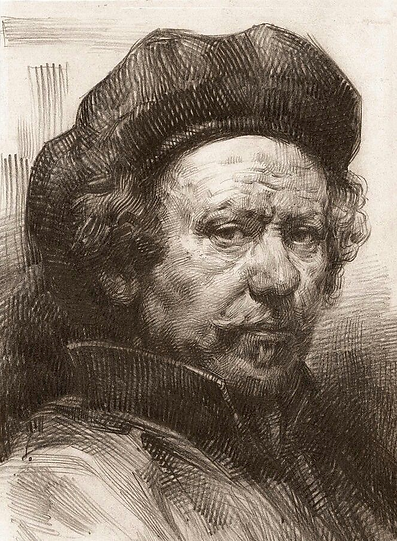DRAWING 101
Hatching
Module 2 - Lecture
Hatching involves the application of parallel lines to create value, shading, or texture in a drawing. The density, length, and direction of these lines dictate the amount of depth and the form of the subject matter. By varying these elements, artists can convey light, shadow, and contour with remarkable precision.
Hatching comes in many forms, the most common of which are Hatching and Cross-hatching, both of which we will focus on in this module.

The image above shows the many faces of hatching in fine art. We will be focusing on hatching and cross-hatching for this module.
Imagine, if you will, a sphere on a blank sheet of paper. By employing hatching, an artist can suggest its three-dimensional form. Light falling on the sphere might be represented by sparse, delicate lines spaced apart, while the shadows would call for denser, closer lines. Through the subtle manipulation of line weight and direction, the illusion of volume emerges, breathing life into the once-flat surface.

Now, let us move on to its close relative, cross-hatching. As the name suggests, cross-hatching involves layering intersecting sets of parallel lines to build up value and texture. By crossing the hatch lines at different angles or densities, artists can achieve a broader range of tones and a more nuanced depiction of form.
Imagine our sphere once more, but this time, let us add complexity. By employing cross-hatching, artists can deepen the shadows, accentuate highlights, and imbue the drawing with a sense of depth and complexity. Through the strategic layering of lines, an artist can create rich textures, from the coarse grain of wood to the softness of fabric, all with the humble stroke of a pen or pencil.

Hatching and Cross-hatching have a long history in fine art which includes printmaking.
In the realm of printmaking, hatching and cross-hatching take on a different role but remain essential techniques for creating depth, form, and texture within the printed image.
Albrecht Durer, (1471-1528) a German printmaker and painter utilized hatching often in his prints. Below you can see a mix of hatching with cross-hatching to emphasize depth and lighting in the two hands clasped in prayer.

The famous Dutch painter Rembrandt (1606-1669) was notorious for utilizing the hatching technique in his drawings. In fact, most of his sketches were done using the hatching technique when he was refining a subject for a final composition. Below is a study on his self-portrait before painting the final piece.

The level of detail he attains using hatching is quite astounding.
Watch this short video where the technique of hatching and cross-hatching are demonstrated. You can end the video after the cross-hatching demonstration (approx. 2:54 mark).
This is a video demonstrating the technique of hatching.
Read over this article that expands on the techniques of hatching and cross-hatching. Click on the image to read the article or you can click HERE.
Read over this article that expands on the techniques of hatching and cross-hatching. Click on the image to read the article or you can click HERE.
Additional Reading Material.
Still can't get enough? That's great! Read over this article if you wish to learn more on the topic of hatching. This is not mandatory, but definitely a good read!


